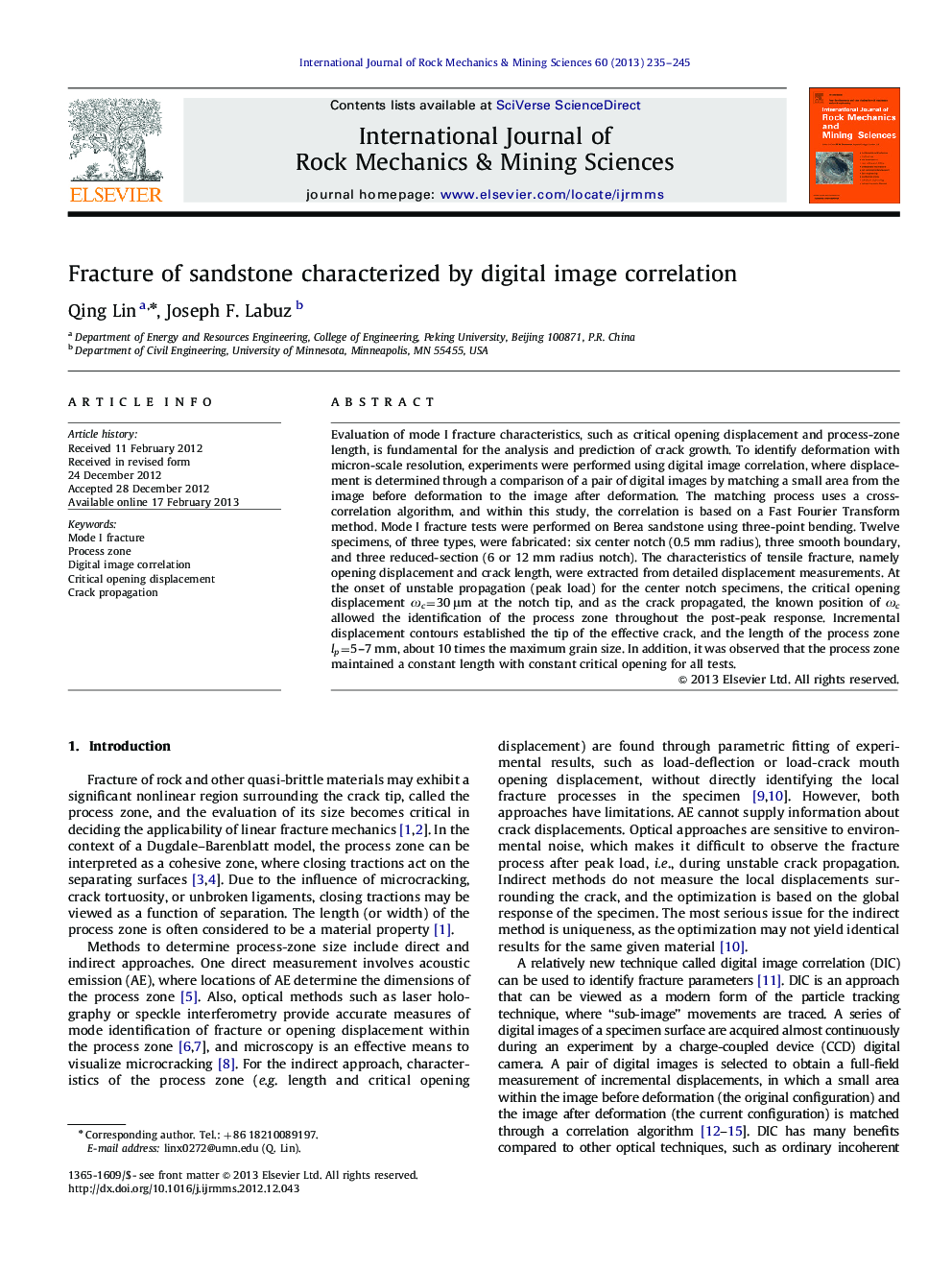| Article ID | Journal | Published Year | Pages | File Type |
|---|---|---|---|---|
| 809286 | International Journal of Rock Mechanics and Mining Sciences | 2013 | 11 Pages |
Evaluation of mode I fracture characteristics, such as critical opening displacement and process-zone length, is fundamental for the analysis and prediction of crack growth. To identify deformation with micron-scale resolution, experiments were performed using digital image correlation, where displacement is determined through a comparison of a pair of digital images by matching a small area from the image before deformation to the image after deformation. The matching process uses a cross-correlation algorithm, and within this study, the correlation is based on a Fast Fourier Transform method. Mode I fracture tests were performed on Berea sandstone using three-point bending. Twelve specimens, of three types, were fabricated: six center notch (0.5 mm radius), three smooth boundary, and three reduced-section (6 or 12 mm radius notch). The characteristics of tensile fracture, namely opening displacement and crack length, were extracted from detailed displacement measurements. At the onset of unstable propagation (peak load) for the center notch specimens, the critical opening displacement ωc=30 μm at the notch tip, and as the crack propagated, the known position of ωc allowed the identification of the process zone throughout the post-peak response. Incremental displacement contours established the tip of the effective crack, and the length of the process zone lp=5–7 mm, about 10 times the maximum grain size. In addition, it was observed that the process zone maintained a constant length with constant critical opening for all tests.
► Digital image correlation is used to characterize fracture processes in Berea sandstone. ► Three types of specimens, including center notch (0.5 mm radius), smooth boundary, and reduced-section (6 or 12 mm radius notch) are tested in the experiments. ► The detailed information involves critical opening displacement ωc=30 μm and the length of the process zone lp=5–7 mm, about 10 times the grain size.
